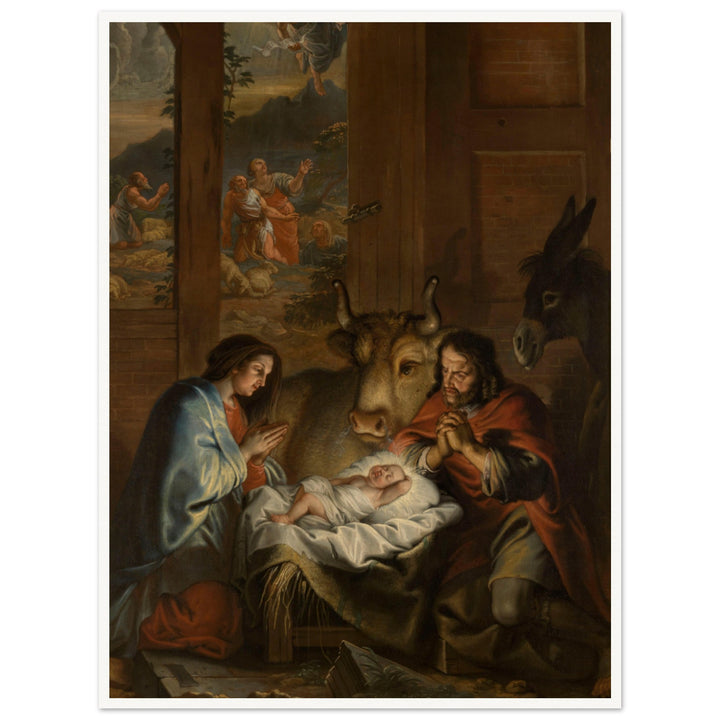The Evolution of Christmas
Christmas is a holiday which, nowadays, conjures images of twinkling lights, gift exchanges, and festive gatherings. However, this celebration actually has a rich and multifaceted history. Its origins are deeply entwined with ancient pagan festivals and early Christian traditions, making it a tapestry of cultural and spiritual influences. Understanding the evolution of Christmas offers insight into how humanity has celebrated light, hope, and renewal across centuries.
Yule and the Norse Legacy
One of the earliest precursors to Christmas is Yule, a midwinter festival celebrated by the ancient Germanic and Norse peoples. Yule marked the winter solstice (which falls around the 21st December each year), the longest night of the year, and symbolized the return of the sun. Fires were lit, feasts were held, and rituals were performed to honor the rebirth of light and life.
Central to Yule was the Yule log, a large log burned in the hearth as a symbol of warmth and protection. This tradition, adapted over time, persists in modern Christmas customs, both as the decorative Yule log cake and in the lighting of fireplaces during the holiday season. The evergreen tree, another enduring symbol, was revered for its ability to remain green during the harshest winters, representing resilience and renewal.

Edmund Dulac, The Snow Queen Pl 2, 1911
Saturnalia: The Roman Influence
In ancient Rome, Saturnalia was a festival dedicated to Saturn, the god of agriculture and time. Celebrated from December 17 to 23, it was a time of feasting, gift-giving, and social inversion, where societal norms were temporarily relaxed. Masters served their slaves, and public revelry abounded.
Saturnalia’s emphasis on joy and generosity found echoes in the Christian celebration of Christmas. As Christianity spread through the Roman Empire, early Christians adapted and transformed existing traditions to align with their faith. The timing of Western Christmas - 25th December - was chosen in part to coincide with Saturnalia and the Roman celebration of Sol Invictus (the Unconquered Sun), making the transition more seamless for converts.
The Birth of Christmas as a Christian Feast
The earliest Christians did not celebrate the birth of Jesus, focusing instead on his death and resurrection. It was not until the 4th century that December 25 was designated as the Feast of the Nativity. This date was likely chosen to Christianize existing solstice celebrations, emphasizing Jesus as the “Light of the World.”
By the Middle Ages, Christmas had become a major feast day in the Christian calendar, marked by church services, processions, and communal feasting. However, its pagan roots were still evident in customs like the use of greenery, feasting, and merry-making.

Jan Erasmus Quellinus, The Nativity, 1689
Medieval and Early Modern Transformations
During the medieval period, Western Christmas celebrations became more elaborate, blending Christian liturgy with folk traditions. The Twelve Days of Christmas, spanning from December 25 to January 6 (Epiphany), became a time of extended festivity. Wassailing, a tradition of singing and sharing spiced ale, reflected the communal spirit of the season.
The Puritans in 17th-century England and America sought to suppress Christmas, viewing its revelry as un-Christian. For a time, the holiday waned in prominence, but it saw a revival in the 19th century, influenced by literature, art, and a renewed focus on family and charity. Charles Dickens’s A Christmas Carol (1843) played a significant role in reshaping Christmas as a time of goodwill and compassion.

John Shelton Eland, The Christmas Rose, 1890
Modern Christmas: A Global Celebration
Today, Christmas is celebrated worldwide, transcending its religious origins to become a cultural phenomenon. Traditions vary widely but often include elements from its diverse history:
-
The Christmas tree, with roots in Yule and medieval German customs.
-
Gift-giving, reminiscent of Saturnalia and the Magi’s gifts to the Christ child.
-
Festive meals and gatherings, echoing ancient feasts.
-
Santa Claus, inspired by St. Nicholas and folkloric figures like Sinterklaas and Father Christmas.
Despite its commercialization, Christmas remains a time for reflection, connection, and celebration. Whether through religious observance, cultural traditions, or personal rituals, the season continues to embody themes of light, hope, and renewal.

Albert Edelfelt, Revelation Of Angels To Shepherds, 1899
A Universal Spirit
The history of Christmas illustrates humanity’s enduring need to find meaning and joy during the darkest time of the year. From Yule’s solstice fires to Saturnalia’s revelry and the Christian Nativity, the holiday has evolved while retaining its core essence: a celebration of life, love, and the promise of brighter days ahead.
By exploring the layers of tradition that form Christmas, we gain a deeper appreciation for its role in connecting us to our past, our communities, and the universal rhythms of nature and spirit.
